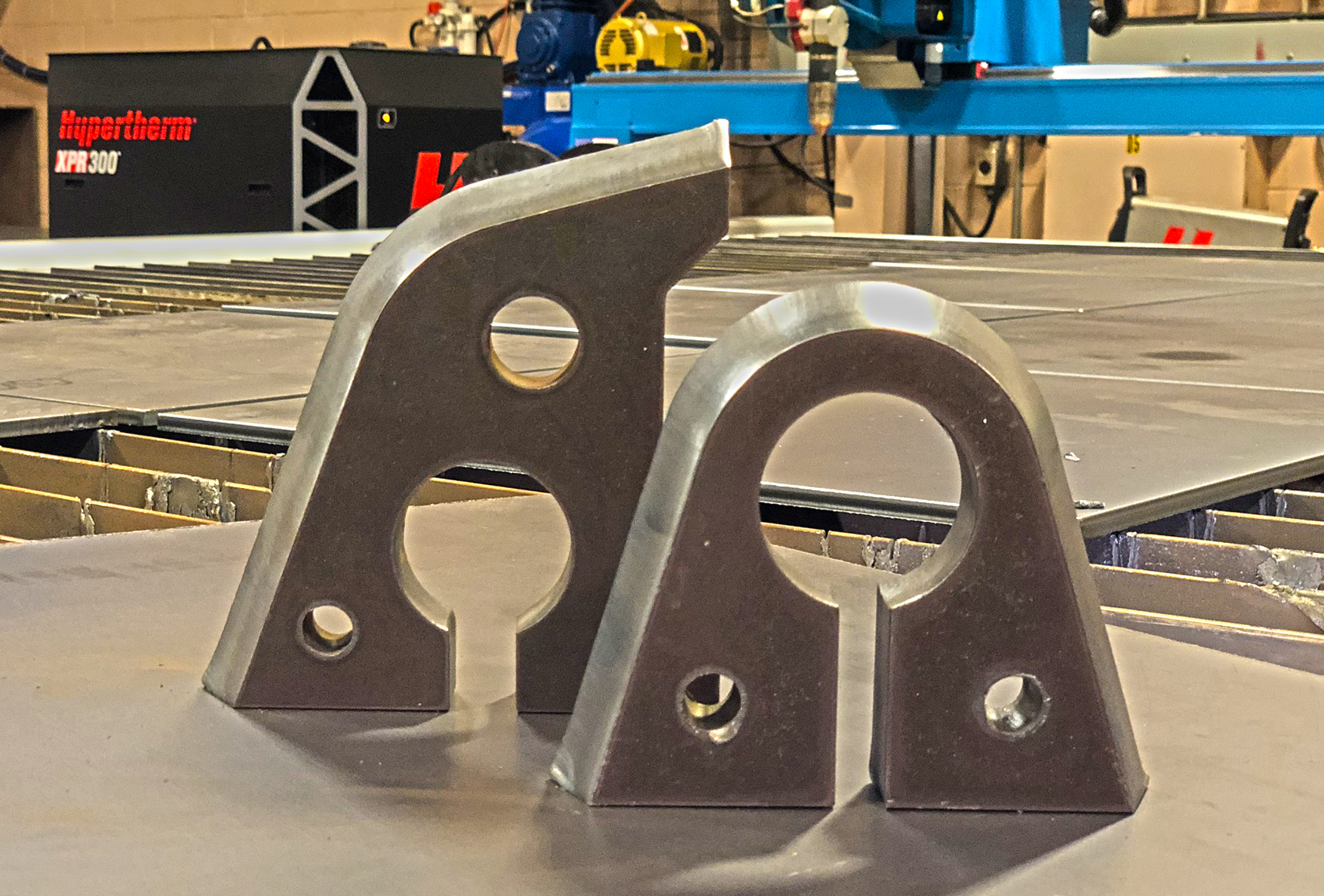Bevel cutting: Do’s and don’ts for accurate cuts using AKS plasma machines
Many parts you cut on your plasma table will require a beveled edge. Use of a bevel head can eliminate secondary operations and increase productivity; however, plasma changes can tilt the torch and consumable wear may decrease productivity and create stress on your machine. Here are a few things to look out for.
Bevel cutting do’s
To get the most out of your AKS machine and cut the highest quality parts, employ these best practices.
Keep your machine properly maintained and clean. Part quality is directly tied to the motion of the machine, consumable quality, and gas flows — if you become lax in maintenance, over time, those dirty bearing rails, consumables with excessive wear, or impedances in gas flows are going to cause your machine to break down, costing you time and money that can have a major impact on your bottom line.
This includes maintaining your slats and tabletop to prevent build-up. Slats become caked in cutoff and slag, which causes the plate to sit an angle, with even a slight angle causing inaccurate cuts. The tabletop reflects the bevel calibration, which reflects the maintenance on the slats.
Establishing a regular maintenance schedule for your machine can help stay ahead of the game. From implementing routine preventive maintenance tasks to clearing off slag and debris, be sure you are regularly attending to your machine.
Run a bevel alignment test, and make sure you have fresh consumables. For each bevel type, consumable amperage, and material thickness, you must do a practice/trial run on a 5”x5” piece of metal. This gives you a chance to make the adjustments that are necessary to accomplish the desired bevel angle, and size without guessing on a 100-part run. When you trial run a bevel cut, it is very important that you never run a trial speed for bevels over 60 inches per minute. Doing so can result in damage to the bevel head itself.
Recalibrate your bevel head routinely, ideally every two weeks. Bevel head alignment is set by first determining the relationship between the bevel head rotation point and the torch head, then by setting the bevel head home position so that the torch is square to the plate. Re-aligning frequently makes sure you’re cutting accurately and any movement has been corrected.
Ensure your programmed bevels always have a lead-in and a lead-out. Bevels programmed without lead-ins or lead-outs can and will have adverse effects on parts, and the machine itself. It can result in “racking” the bridge out of square, and parts will never meet quality standards.
Pay attention to the machine reports. You can print out reports from ProNest, which will show all the parts on the sheet, tell you what amperage to run, thickness of material, type and more, giving you everything you need to know to run that program. Reviewing the reports will keep you in the loop on any red flags or issues that need addressed.
Bevel cutting don’ts
Just as there are best practices, there are things some people do that are counterproductive or downright damaging to your machine. Avoid these and you’ll be in good shape.
Don’t run your machine over 60 inches per minute. It’s worth saying again: if you go higher than that, it’s more likely that you will crash the machine.
Don’t bevel at more than a 45 degree angle or place a bevel without a lead-out, because the torch head will not be straight when it makes the next pierce.
Do not enter custom information in ProNest for beveling. The “Advanced Options” window where bevels are applied in ProNest has drop-down menus to determine parameters based on the material, degree, type, etc., that you can cut. It won’t work properly if you try to change it to a custom value not available in the drop down. If it’s not a default option, it’s not going to be in the spreadsheet, so the plasma won’t function correctly.
You’ve made an investment in technology – be sure to protect that investment by following these guidelines. If you’re looking for quality plasma cutting systems, the AKS dura-kut and accu-kut machines offer best-in-class cutting to meet your needs. Talk to us for a demo or quote today.
